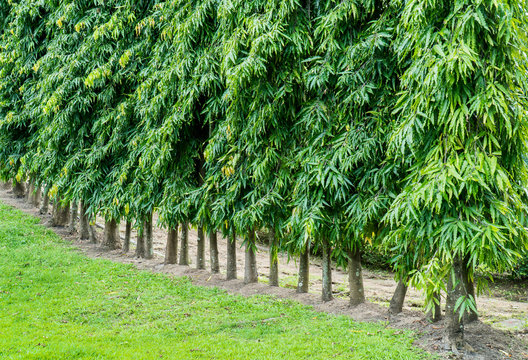
The original Ashoka tree, also known as Saraca Asoca/Indica, is a rainforest tree with wonderfully lush leaves and yellow-orange blossoms. The floral arrangements are vibrant, heavy, and fragrant. The trees are typically found in the Himalayan foothills, the Deccan plains, and the Western Ghats.
The Ashoka tree is revered in nations such as India, Nepal, and Sri Lanka. The tree is strongly associated with Hinduism and Buddhism.
Indian Mythology and the Ashoka Tree
The Ashoka tree is revered in ancient Hindu mythology, art, sculpture, and the Ramayana. Sita sat under the Ashoka tree in Lanka, according to the Ramayana authored by Ved Vyas. The tree is significant in Buddhism because Shakyamuni/Gautam Buddha is claimed to have been born under the Ashoka tree in Lumbini Garden.
The Ashoka tree is a female-friendly tree.
Ashoka is a Sanskrit term that signifies “free of grief.” The tree is regarded as woman-friendly since it may alleviate all of a woman’s anguish and sadness by bestowing excellent health.
The Hinduism of the Ashoka tree
The tree is associated with God Kama, the God of love, and is considered one of the most sacred trees in Hindu culture. The blossoms of the Ashoka tree are among the flowers in God Kama’s quiver, and they signify seductive hypnosis among the flowers. As an inhabitant of Yaksha, the tree is associated with the Yakshi legendary entity. It may be located near the Hindu temple’s gates. In Hindu sculpture, the tree has become a regular ornamental motif. Hindus venerate the Ashoka tree during the Chaitra month, the first month of the Hindu calendar. Ravana led Sita Mata to Ashoka Vatika, Lanka in the Ramayana.
In Indian culture, the Ashoka tree is worshipped.
Hindus venerate the Ashoka tree during the Chaitra month, the first month of the Hindu calendar, according to Indian custom.
The Advantages of the Ashoka Tree
The tree can help with gynecological issues, menstrual disorders, internal bleeding, hemorrhages, piles, and diabetes, as well as controlling stomach discomfort, spasms, and joint aches.
Pain and sickness are treated by applying dried stems, bark, and flowers. The tree’s seeds, blossoms, and bark are widely utilized in India to make several tonics and capsules for treating various health issues.
The tree is also useful in treating fungal infections, worm infections, skin burns, allergies, cleansing the blood in the body, alleviating diarrhea, and lowering the risk of kidney stone formation.
The bark of the tree is used in the creation of various cosmetic goods that serve to enhance an individual’s skin tone.
Astrological advantages of the Ashoka tree
According to Indian Astrology, the tree removes the individual’s grief and sadness while bringing him reputation, renown, and fortune.
The Ashoka tree is utilized to address financial problems, and marriage problems, reduce Mangal dosha and undertake spiritual acts.
Individuals experiencing financial difficulties may plant an Ashoka tree in their home’s garden and nurture it frequently. By engaging in this method, one may most likely resolve financial concerns.
On Sunday, bring the tree’s roots and perform Gangajal Abhishek on them.
Offering the bark of the Ashoka tree to Lord Hanuman every Tuesday will most likely reduce Mangal Dosha in a person’s Janampatri.
If you repeat the mantra while sitting in the east direction under the Ashoka tree, you will most certainly achieve success in life.
If you burn a ghee lamp under this tree, it is expected to bring you good health and fortune.
